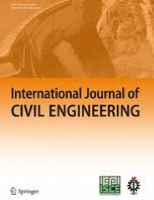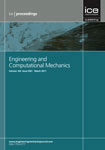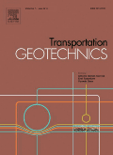
COMPUTER-AIDED CIVIL AND INFRASTRUCTURE ENGINEERING
Scope & Guideline
Transforming Civil Engineering with Cutting-Edge Technology
Introduction
Aims and Scopes
- Integration of Computational Methods in Civil Engineering:
The journal emphasizes the use of advanced computational techniques, including machine learning, deep learning, and artificial intelligence, to solve complex problems in civil and infrastructure engineering. - Structural Health Monitoring and Assessment:
A core area of research involves the development and application of methodologies for monitoring the health of structures, including the use of sensors, computer vision, and data analytics. - Optimization and Decision-Making in Infrastructure Management:
The journal covers research focused on optimization models and decision-making frameworks that improve the efficiency and effectiveness of infrastructure management, including transportation systems and urban planning. - Innovative Materials and Construction Technologies:
Research on new materials and construction technologies, including 3D printing, smart materials, and sustainable practices, is a significant focus area within the journal. - Simulation and Modeling of Infrastructure Systems:
The journal promotes studies that involve the simulation and modeling of various infrastructure systems to predict performance, assess risks, and optimize designs. - Data-Driven Approaches for Urban and Transportation Systems:
A growing area of focus is the application of data-driven methodologies to urban and transportation systems, including traffic management, public transportation, and smart city solutions.
Trending and Emerging
- Machine Learning and AI Applications:
There is a significant increase in research utilizing machine learning and artificial intelligence to enhance predictive modeling, damage detection, and decision-making processes in civil engineering. - Smart Infrastructure and IoT Integration:
Emerging themes include the integration of Internet of Things (IoT) technologies in infrastructure systems for real-time monitoring and management, showcasing a shift towards smart infrastructure. - Sustainability and Resilience in Infrastructure:
Research focusing on sustainable practices and resilience in infrastructure design and management is gaining momentum, reflecting the industry's response to climate change and environmental challenges. - Robotics and Automation in Construction:
The journal is seeing a rise in studies exploring the use of robotics and automation in construction processes, emphasizing efficiency, safety, and quality control. - Advanced Simulation Techniques:
There is an emerging focus on advanced simulation techniques, including virtual reality and augmented reality applications, for infrastructure design, training, and management. - Data-Driven Urban Mobility Solutions:
Research exploring data-driven solutions for urban mobility, including traffic prediction, smart public transit systems, and integrated transportation networks, is becoming increasingly prominent.
Declining or Waning
- Traditional Civil Engineering Practices:
There is a noticeable decline in research focused solely on traditional civil engineering practices without the integration of advanced computational techniques or innovative technologies. - Static Structural Analysis without Modern Techniques:
Research that relies solely on classical static analysis methods without incorporating contemporary data-driven or simulation-based techniques is becoming less frequent. - Manual Inspection Techniques:
The prevalence of studies centered around manual inspection and assessment techniques for infrastructure is waning, as automated and AI-based methods gain prominence. - Conventional Materials Research:
Research focusing on conventional materials and methods, without exploring innovative or sustainable alternatives, is becoming less common as the field moves towards more advanced solutions. - Single-Disciplinary Approaches:
There is a decreasing emphasis on single-disciplinary approaches, with more studies emphasizing interdisciplinary collaboration and integration of various fields in civil engineering.
Similar Journals

Engineering Journal-Thailand
Fostering engineering breakthroughs for a sustainable future.Engineering Journal-Thailand, published by Chulalongkorn University, Faculty of Engineering, is a prominent academic journal dedicated to advancing knowledge and research in the diverse field of engineering. With an ISSN of 0125-8281 and an unwavering commitment to quality, the journal has established a substantial presence in the academic community since its inception in 2009. As of 2023, it is ranked in the Q3 category for Engineering (miscellaneous) and has achieved a Scopus rank of 137 out of 307, placing it in the 55th percentile of general engineering journals. Although it operates without open access, its impact within the engineering domain is significant, providing a vital platform for researchers, professionals, and students to disseminate their findings and engage with contemporary engineering challenges. The journal serves as a vital resource for those seeking to stay at the forefront of engineering innovation and contributes to the global discourse by bridging local insights with international perspectives.

Frontiers in Future Transportation
Advancing Research for Smart TransportFrontiers in Future Transportation, published by FRONTIERS MEDIA SA, is an influential Open Access journal that has been at the forefront of research since its inception in 2020. With an ISSN of N/A and E-ISSN 2673-5210, this journal provides a comprehensive platform for cutting-edge studies in the field of transportation, encompassing urban studies, automotive engineering, and innovative control systems. Ranking impressively in Scopus with notable percentiles—61st in Urban Studies, 51st in Automotive Engineering, and others—it underscores its significance within the scholarly community. The journal is committed to advancing the discourse surrounding sustainable and smart transportation solutions that address the challenges of future mobility. By offering unrestricted access to research, it invites contributions from researchers, professionals, and students alike, fostering collaboration and disseminating knowledge pivotal to transforming transportation systems globally. With its headquarters based in Lausanne, Switzerland, Frontiers in Future Transportation is poised to make substantial contributions to the evolving landscape of transport research through 2024 and beyond.

International Journal of Civil Engineering
Building Knowledge, Shaping the Future of Civil EngineeringThe International Journal of Civil Engineering, published by Springer International Publishing AG, is a premier platform dedicated to advancing the field of civil engineering. With a notable impact factor and a strong reputation reflected in its Q2 quartile rankings in both Civil and Structural Engineering as well as Geotechnical Engineering and Engineering Geology, this journal facilitates the dissemination of high-quality research from 2009 through 2024. Researchers and professionals can access cutting-edge studies and innovative practices that address contemporary challenges in civil engineering, such as sustainable infrastructure development, environmental impacts, and advanced material technologies. Situated in Switzerland, the International Journal of Civil Engineering emphasizes the critical interplay between theory and application, making it an essential resource for students, academics, and industry leaders seeking to stay at the forefront of their disciplines.

Frontiers of Structural and Civil Engineering
Exploring New Frontiers in Architectural ExcellenceFrontiers of Structural and Civil Engineering, published by HIGHER EDUCATION PRESS, is a premier academic journal dedicated to advancing the fields of architecture, civil, and structural engineering. With an ISSN of 2095-2430 and E-ISSN of 2095-2449, this journal caters to the dissemination of high-quality research and innovative practices from 2012 onwards, highlighting important developments up until 2024. Ranked in the top quartile (Q1) for Architecture and Q2 for Civil and Structural Engineering in 2023, it holds an impressive Scopus ranking of #19 out of 189 in Architecture and #101 out of 379 in Civil and Structural Engineering, reflecting its impact and relevance in the scientific community. This journal invites contributions that demonstrate pioneering approaches, fostering collaboration among researchers, professionals, and students alike, and significantly contributes to the global knowledge base in the engineering disciplines.

Civil Engineering Journal-Tehran
Fostering Scholarly Discourse in Dynamic Engineering Fields.Civil Engineering Journal-Tehran is a premier academic publication focusing on the dynamic fields of civil engineering, construction, and environmental science. Published by C EJ PUBLISHING GROUP, this journal has garnered significant recognition, reflected in its impressive quartile rankings—ranking Q1 in Building and Construction and Civil and Structural Engineering, and Q2 in Environmental and Geotechnical Engineering. With its ISSN 2676-6957 and E-ISSN 2476-3055, this journal serves as a crucial platform for disseminating innovative research and advancements from 2019 through 2024. Notably situated at K N Toosi University of Technology in Tehran, Iran, it emphasizes both local and global perspectives on civil engineering challenges. Aiming to foster scholarly discourse, the journal is essential for researchers, students, and professionals dedicated to the evolution and sustainability of civil engineering practices.

Proceedings of the Institution of Civil Engineers-Engineering and Computational Mechanics
Bridging Theory and Practice in Engineering ExcellenceProceedings of the Institution of Civil Engineers - Engineering and Computational Mechanics is a prestigious journal published by Emerald Group Publishing Ltd, dedicated to advancing the fields of civil and structural engineering, as well as mechanics of materials. With an ISSN of 1755-0777 and E-ISSN 1755-0785, this journal serves as a critical platform for disseminating innovative research and practical insights from 2009 through 2024. As part of its commitment to academic rigor, it is categorized in the Q4 quartile for both civil and structural engineering and mechanics of materials, reflecting a unique position in the scholarly community. The journal is essential for professionals, researchers, and students aiming to stay informed on current trends, methodologies, and applications in engineering and computational mechanics. By engaging with this publication, readers gain access to crucial findings that contribute to the advancement of infrastructure and materials science, vital for developing resilient and sustainable engineering solutions.

Jordan Journal of Civil Engineering
Elevating Standards in Civil Engineering ResearchThe Jordan Journal of Civil Engineering, ISSN 1993-0461 and E-ISSN 2225-157X, serves as a pivotal platform for research dissemination in the field of civil engineering. Published by Jordan University of Science & Technology, this journal has established itself as a vital resource since its inception in 2007 and continues to impact the academic community with its wide-ranging scope covering innovative practices and cutting-edge research in civil and structural engineering. Holding a respectable Q3 ranking in the 2023 category, with Scopus positioning it at rank #235 out of 379, the journal reflects growing recognition within its discipline. Although currently not an open-access publication, it provides essential insights that can benefit researchers, industry professionals, and students seeking to contribute to advancements in civil engineering through rigorous scholarly articles and studies up to 2024. Its commitment to high academic standards enhances the relevance and importance of its contributions to both local and global engineering practices.

Civil Engineering Infrastructures Journal-CEIJ
Advancing infrastructure knowledge for a sustainable future.Civil Engineering Infrastructures Journal (CEIJ), published by the University of Tehran, College of Engineering, is a premier platform dedicated to advancing the field of civil and structural engineering. With an ISSN of 2322-2093 and an E-ISSN of 2423-6691, CEIJ has been an Open Access journal since 2013, ensuring that critical research is accessible to a global audience. While it currently holds a Q4 category ranking in Civil and Structural Engineering as per the 2023 quartiles, the journal is committed to enhancing its reputation and impact within the academic community. Researchers, professionals, and students will find valuable insights in its compelling articles, which cover a wide array of topics pertinent to civil engineering infrastructures. The journal aims to foster innovative ideas and solutions that address contemporary challenges in the industry. As a publication rooted in Iran but reaching an international readership, CEIJ serves as a significant conduit for disseminating impactful research in the ever-evolving landscape of civil engineering.

Transportation Geotechnics
Bridging the Gap Between Geotechnics and Mobility.Transportation Geotechnics is a premier academic journal published by Elsevier, focusing on the intersection of geotechnical engineering and transportation systems. With an impressive impact factor and categorized in the Q1 quartile across multiple disciplines including Civil and Structural Engineering, Geotechnical Engineering, and Transportation, this journal stands as a vital resource for researchers and practitioners alike. It covers a broad spectrum of topics ranging from soil behavior in transport contexts to innovative materials and methods that enhance infrastructure stability and performance. As an essential platform fostering knowledge dissemination, Transportation Geotechnics enables contributors to share their groundbreaking findings while providing readers with access to cutting-edge research and reviews from 2014 to 2024. Its illustrious Scopus rankings place it prominently in the global research landscape, making it an indispensable tool for students, professionals, and academics dedicated to advancing the field.

INTEGRATED COMPUTER-AIDED ENGINEERING
Bridging Theory and Application in Engineering ExcellenceINTEGRATED COMPUTER-AIDED ENGINEERING (ISSN: 1069-2509, E-ISSN: 1875-8835) is a prominent journal published by IOS PRESS in the Netherlands, renowned for its rigorous coverage of the interdisciplinary fields of artificial intelligence, computational theory, and software applications. Since its inception in 1993, this journal has consistently contributed to the academic discourse, standing out in the Q1 and Q2 quartiles across various categories as of 2023. With Scopus rankings placing it in the93rd percentile for computational theory and mathematics and 91st for theoretical computer science, it is a vital resource for researchers and professionals seeking to explore innovative methodologies and advanced engineering solutions. While not an open-access journal, INTEGRATED COMPUTER-AIDED ENGINEERING provides comprehensive access options for institutional subscribers, ensuring the dissemination of vital research findings to a global audience. This journal aims to facilitate the exchange of knowledge, inspire future studies, and foster technological advancements in computer-aided engineering.